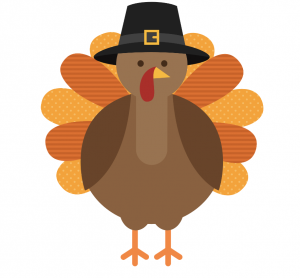
Next week is Thanksgiving! Did you know that Thanksgiving always falls on a Thursday? Thanksgiving has been an annual holiday in the United States since 1863. However, the First Thanksgiving was celebrated in 1621. Here are five things we know about the First Thanksgiving!
1. More than 100 people attended
The Wampanoag Indians who attended the first Thanksgiving had occupied the land for thousands of years and were key to the survival of the colonists during the first year they arrived in 1620, according to the National Museum of the American Indian. After the Pilgrims successfully harvested their first crops in the fall of 1621, at least 140 people gathered to eat and partake in games, historians say. No one knows exactly what prompted the two groups to dine together, but there were at least 90 native men and 50 Englishmen present. They most likely ran races and shot at marks as forms of entertainment, Wall said. The English likely ate off of tables, while the native people dined on the ground.
2. They ate for three days
The festivities went on for three days, according to primary accounts. The nearest village of native Wampanoag people traveled on foot for about two days to attend. It took them so long to get there that it didn’t make sense for them to turn around and go home after the meal.
3. Deer topped the menu
Venison headlined the meal, although there was a healthy selection of fowl and fish, according to the Pilgrim Hall Museum, which cited writings by Plymouth leaders Edward Winslow and William Bradford. There was a “great store of wild turkeys” to be eaten, as well as ducks and geese, wrote Bradford, who was the governor. Winslow said Massasoit, the leader of the Wampanoag people, contributed five deer to the dinner.
4. It wasn’t called Thanksgiving
There’s no evidence that the 1621 feast was called Thanksgiving, and the event was not repeated for at least a decade, experts say. Still, it is said to be the inspiration behind the now traditional annual gathering and a testament to the cooperation of two groups of people.
5. The peace was short-lived
Early European colonizers and Native Americans lived in peace through a symbiotic relationship for about 10 years until thousands of additional settlers arrived. Up to 25,000 Englishmen landed in the New World between 1630 and 1642, after a plague drastically cut the native population by what’s believed to be more than half. The arrival of new settlers prompted a fight for land and rising animosity. War exploded in 1675, years after Massasoit and Bradford died and power fell to their successors. Many Native Americans have long marked Thanksgiving as a day of somber remembrance.
Click the link below to play a game that explores Wampanoag life prior to European settlement and the year leading up to the 1621 harvest feast, today known as the “First Thanksgiving.” The game investigates the interactions between the Wampanoag people of Patuxet and the earliest colonists known as the Pilgrims by exposing players to archaeological artifacts from the museum’s collections, primary source documents, and oral stories told from generation to generation.
CLICK HERE TO EXPLORE AND PLAY!
Source: https://time.com/4577425/thanksgiving-2016-true-story/